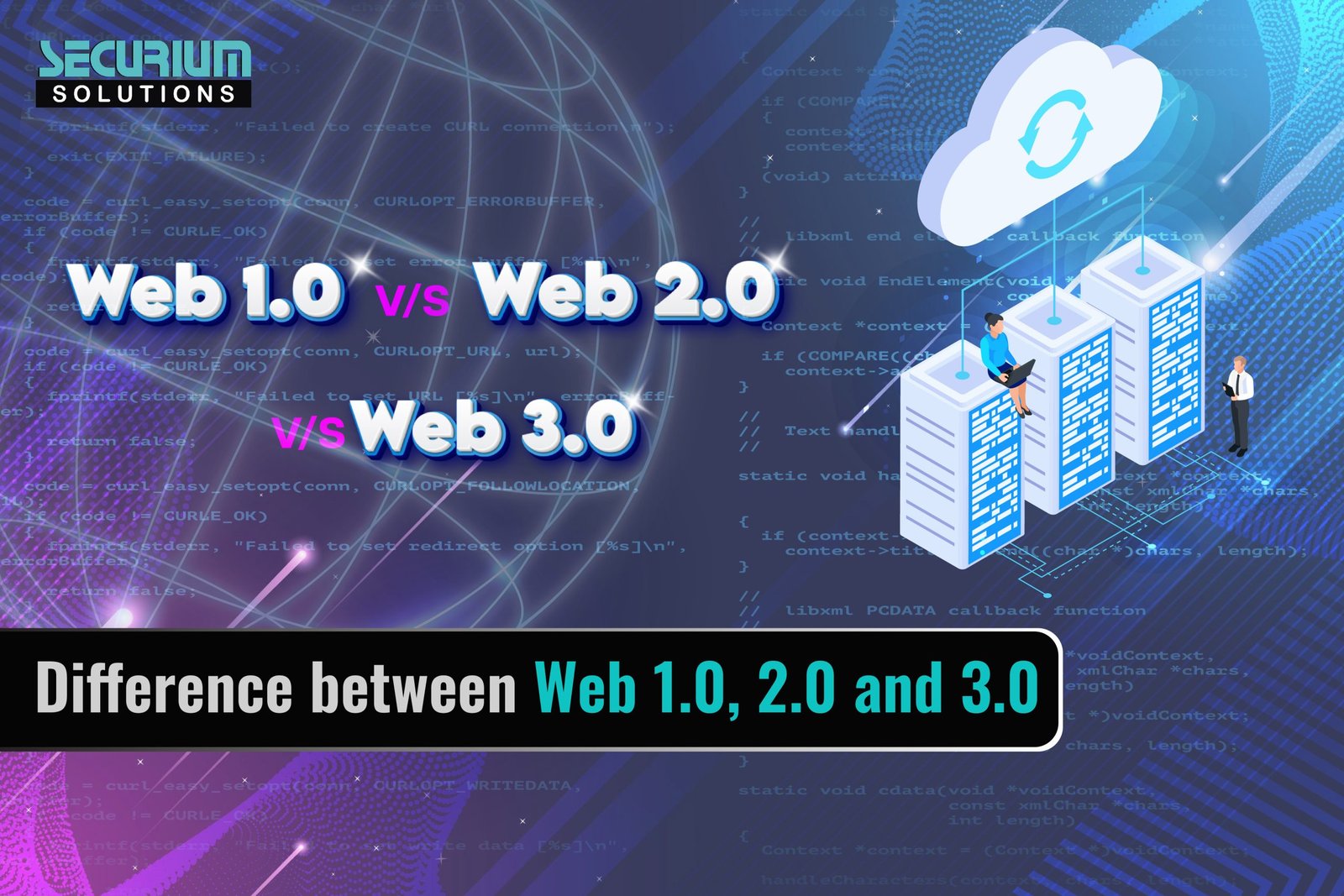The World Wide Web’s current version, Web2.0, will be replaced by Web3.0. Web3.0 creates an open and decentralised ecosystem where users may fully own their data by utilising a variety of technologies, including artificial intelligence, blockchain, machine learning, etc. In Web3.0, privacy is emphasised.
In the modern world, a closed and centralised ecosystem is dominated by a select few huge tech firms like Google, Meta, and Amazon. They act as a conduit between people and their online life.
Why is Web 3.0 important?
Today On the modern internet, it is quite difficult to be entirely anonymous or conceal your identity. When a person conducts a search on Google, Google is aware of who they are and the location from where they are searching. Google gathers this information and sells it to their advertising partners so that they can display you relevant advertisements. When it comes to social networking sites, Instagram is now highly popular. We upload our photos to Instagram, and if we wish to remove them, we can do so by visiting our profile page. Is it truly as easy as it appears to be? No, that’s a resounding NO.
Once we upload data to the internet, we cannot remove it. It is kept in data centres spread out all across the world. Since we don’t have direct access to those data centres, we are unable to remove our photographs from the internet by simply deleting them from the Instagram application. The current internet operates in this manner. The entire internet is under the authority of some organisations.
In Web3.0 technology, we have full access to our data and are free to act whenever we like without disclosing our actual identities. To gain a thorough idea, let’s first discuss Web1.0 and Web2.0 before delving further into Web3.0.
Describe Web1.0.
The first generation of the World Wide Web, also known as Web1.0 or the fundamental building blocks of the current internet, was introduced by Tim Berners Lee in the beginning of the 1990s.
Static web pages formed the basis of Web1.0. Basically, it’s a collection of static web pages that simply allow for information consumption. The art of creating content was young. Users had a very small number of opportunities to create material. It has a centralised ecosystem as its foundation. Web1.0 can be viewed as a read-only web.
Describe Web 2.0.
The “Age of Advertisement and Lack of Privacy” is what Web 2.0 is known as. We are now using a different version of the internet. Users can now engage with the contents of the Internet, making it no longer static. Web 2.0 made it possible for consumers to communicate with the internet. Users can now access the internet for information, and the internet can access information from users.
Following the creation of Web2.0, we have observed businesses that have emphasised their online presence. They are now able to advertise their services or sell their goods anywhere in the world. That is the capability of the internet, made available by Web2.0.
There is, however, always a negative aspect to everything, and “Lack of Privacy” is one of the negative aspects of Web 2.0. Everything we do online is saved in data centres throughout the world that are owned by large corporations like Google, Meta, Amazon, and others.
Our data are completely in these companies control. Users should avoid doing it while providing any private information. People claim that the current internet is bad because of security and privacy concerns because of this.
How Does Web 3.0 Work and What Is It?
The traditional approach of creating and deploying apps that run on a single server or store data in a single database is not used by Web3 developers. Developers instead create and distribute their programmes on decentralised networks with several peers-to-peers nodes. “DApps” refers to the applications created on decentralised networks. In the Web 3.0 world, instead of being stored in data centres, all user information is kept in a virtual digital wallet.
The Web3 applications, which utilise blockchain technology, allow users to sync their virtual digital wallets. The user can now easily delete their log-off from the programme, disconnect their digital wallet, and take their data with them if they choose to disconnect their account from an application. This demonstrates that users have full control over their data because the information is not kept in the application’s database.
Have you ever noticed that when people discuss Web3.0, cryptocurrencies are frequently brought up? A key component of Web 3.0 is cryptocurrency. People who wish to take part in creating and enhancing the Web3.0 ecosystem are given cash rewards in the form of tokens. People can take part in this by offering a range of services that are now provided by different cloud providers, such as storage, compute, bandwidth, and others.
The user who utilises these services is responsible for paying for it, much as they do today when using cloud service providers like AWS. Money in Web3 is distributed directly to network users, eliminating middlemen from the ecosystem.
Securium academy proudly presents our new Certified Web3 Security Professional (CW3SP). Stay ahead of the curve with cutting-edge training and become a certified expert in the decentralized web3.0 revolution.
Benefits of Web 3.0
1. Full Control Over Data: Users will have full control over their information or data in Web3.0. Only the user’s consent is required in order to share information. Our personal information is currently kept on numerous servers owned by large corporations like Meta, Google, and Amazon.
2. Information is readily available: One of the key advantages of Web3.0 is that users may access their data at any time, from any location.
3. No need for authorization: Anyone can generate an address and use it to interact with blockchain networks. They are not prohibited from constructing an address based on their sociological and demographic characteristics.
4. Uninterrupted Service: As we already know, Web3.0 relies on a distributed blockchain network. All data is saved across several nodes, and many backups are taken to guarantee that the service is always available to consumers.
5. Security: The main component is Web3.0 security. The existing system allows for the copying or altering of contents without the user’s knowledge. Blockchain technology, on the other hand, is more secure; it is exceedingly challenging to hack or tamper with the data.
Choose Securium Solutions Cybersecurity Certification Training Programmes, which incorporate instructor-led live training and real-world project experience, if you want to master cybersecurity and launch a thriving career in it. You can master cybersecurity by gaining a solid understanding of it through our training programme. technology




